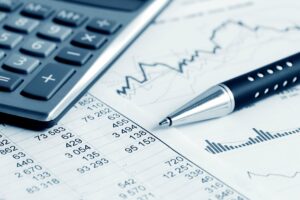Nonprofit Budgeting: How to Get Started + Template
Regularly monitor how aligned your projected budget is with what you’re actually experiencing, and make tweaks as you need to. Cash flow refers to the monthly movement of money coming in and out of your organization. Tracking this number tells you how much you have in the bank at any given time. This information is hugely important, because it shows you the best (and safest!) times to spend. Get an idea of who the granting bodies are, who they typically choose to support, and how much funding they have to offer. Once your costs are set, you know precisely what numbers you can expect to work with.
- You may be able to access and download these templates easily for free, and you can choose to save it in either Microsoft Excel or PDF formats, depending on which one suits you best.
- While not specifically a budget, a cash flow projection can help keep your nonprofit on track financially.
- A mission statement template will help you craft the perfect mission statement for your nonprofit.
- For instances where the actual income is lesser than expected, there are actually a few ways on how to achieve this.
- Needless to say, such a document is very important for this sector of organizations.
- Nonprofit budgeting follows a similar process, except you’re projecting revenue and expenses for your entire organization.
Sample Profile
For example, some nonprofits list corporate grants with their other grant funding, while others consider them a type of corporate philanthropy. If you’ve created a budget for your household before, you probably averaged your expenses, calculated your income, and determined how much you could save for the future. Nonprofit budgeting follows a similar process, except you’re projecting revenue and expenses for your entire organization. You also want to pay close attention to different budgets within your nonprofit’s plan. Good budgeting for nonprofit organizations is critically important to success, as nonprofits typically have stretched resources, fluctuating funding, and/or heavy reliance on specific funding sources. If your proposal is to support general operating expenses, it’s likely you’ll only need to include your nonprofit’s operating budget.
Fiscal Management Activities Calendar
A key component of financial sustainability is the commitment of board and staff to financial management that includes timely review of financial reports and advance planning. One way that board and staff plan for income and expenses in the future is by creating a budget. Approval of the annual budget is one of the fundamental building blocks of sound financial management.
- The Multiyear Nonprofit Budget Template by Spreadsheet Daddy is useful for this.
- For more on budget proposals, please refer to our article Free Budget Proposal Templates.
- You’ll also want to get a clear idea of your revenue streams to understand where your money is coming from.
- Easily manage your money, track expenses, and pave the way for financial success with this intuitive budgeting tool.
- Funders want to understand that your nonprofit is functional and financially healthy.
Get our checklist of the best free nonprofit tools of 2024 sent directly to your inbox
If the details aren’t clear or don’t add up, a funder will see https://greatercollinwood.org/main-benefits-of-accounting-services-for-nonprofit-organizations/ through your numbers. Since this is such an important document for accountability purposes, the layout should be easy-to-navigate, and the relevant applicable formulas should be as accurate as possible. It contains two budgets for different fiscal periods that can be compared to each other like–for–like as you work your way through to the end of the current fiscal year.
Feeling bogged down by repetitive processes and redundant work?
For example, WWF (World Wildlife Fund) frequently reviews its budgets to optimize spending for conservation projects, making data-driven decisions for global campaigns. In FY23, WWF increased spending on conservation programs by 16% compared to FY22. Discover how to get the most out of your nonprofit’s business plan by reading Free Nonprofit Business Plan Templates. After your nonprofit throws a fundraising event, it’s a good idea to follow up with attendees and get their feedback. A donor satisfaction survey helps your nonprofit understand, in general, how satisfied your donors are with how they have been treated in the relationship.
FREE 10+ Monthly Budget Worksheet Samples in PDF MS Word Google Docs Google Sheets Excel
Their on-the-ground perspective will help forecast realistic program costs and identify cost-saving opportunities. To learn more about annual business budget templates, that can be used across different organizations, see Free Annual Business Budget Templates. The approved budget then serves as a guide for financial activity in the months ahead. Budgets should not be written in stone, because the financial position of the nonprofit may change during the year.
There Are Several Types of Grant Budgets You Might Use in an Application
Enter project expenses in the same month-by-month columns to compare total expenses to total revenue. Use this basic sample annual nonprofit budget template with sample text to guide you Top Benefits of Accounting Services for Nonprofit Organizations You Should Know through the process of balancing your nonprofit’s budget. This template provides an accurate picture of your nonprofit’s budgeted operating costs and all-around fiscal health.








